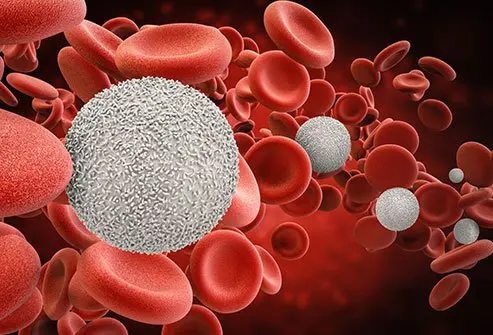
Hemoglobin is one of the most important markers measured during routine blood testing. It helps assess how well your body is transporting oxygen and maintaining proper red blood cell balance. Most discussions around hemoglobin focus on low levels, commonly linked to anemia. However, high hemoglobin can also carry significant clinical implications. When hemoglobin is elevated beyond the normal range, it may indicate a physiological adaptation, an environmental influence, or an underlying medical condition that requires attention.
The key is knowing whether the elevation is temporary or persistent, and whether it’s accompanied by symptoms or other abnormal findings in your bloodwork. A single elevated value may not point to immediate danger, but consistent high readings deserve a closer look. The bloodwork hemoglobin test helps identify these trends and can serve as the starting point for deeper evaluation. Understanding what this marker represents, why it might be elevated, and what actions to take next is essential for anyone looking to stay proactive about their health.
What Does Hemoglobin Actually Do?
Hemoglobin is a protein inside red blood cells that carries oxygen from the lungs to tissues throughout the body. It also transports carbon dioxide back to the lungs for exhalation. Each red blood cell contains millions of hemoglobin molecules, and their efficiency in binding and releasing oxygen is vital to every organ system. Without sufficient hemoglobin, cells are starved of oxygen. But when hemoglobin levels are too high, the problem shifts toward increased blood thickness and impaired circulation.
Normal hemoglobin values are measured in grams per deciliter and vary slightly by age, sex, and individual health status. For most adult males, the expected range is 13.8 to 17.2 g/dL, while for females it’s typically 12.1 to 15.1 g/dL. When results exceed these ranges, especially on repeat testing, it raises concern for conditions that may be affecting oxygen delivery, red blood cell production, or hydration status. Interpreting bloodwork hemoglobin results in context—rather than as isolated numbers—is key to understanding what may be driving any abnormality.
What Causes High Hemoglobin?
Elevated hemoglobin can occur for many reasons, some of which are entirely non-threatening. Living at high altitudes, for instance, leads to lower oxygen availability in the air. In response, the body naturally produces more red blood cells to maintain adequate oxygen delivery. This adaptation often results in higher baseline hemoglobin levels. Similarly, individuals who train at high intensity or engage in endurance sports may have slightly elevated hemoglobin as their bodies adapt to repeated oxygen demand.
Smoking is another common contributor. Carbon monoxide from cigarette smoke binds to hemoglobin more readily than oxygen does, effectively decreasing the amount of usable oxygen in circulation. To compensate, the body increases red blood cell production, which raises hemoglobin. Dehydration can also elevate levels by reducing plasma volume and concentrating blood components, although this effect is usually temporary and resolves with rehydration.
More serious causes include chronic respiratory conditions such as chronic obstructive pulmonary disease (COPD), heart disease that interferes with oxygen exchange, and rare blood disorders like polycythemia vera. In these situations, hemoglobin may remain elevated over time, increasing the risk for complications. These conditions often require additional blood tests and imaging to confirm the underlying cause. Consistently high bloodwork hemoglobin values, particularly those that are significantly above the reference range, should not be ignored, even in the absence of obvious symptoms.
Are There Symptoms to Watch For?
Symptoms related to high hemoglobin levels depend on the severity of the elevation and the presence of underlying medical conditions. Mild increases are often asymptomatic and discovered during routine testing. As levels rise, however, the viscosity of blood can increase, making it harder for the heart to pump and more likely that clots will form. This can lead to symptoms such as headaches, fatigue, dizziness, and visual disturbances. Some individuals also report a ruddy complexion or skin that appears flushed, particularly on the face.
One specific symptom that may be linked to elevated red blood cell counts is itching after hot showers or baths. This is sometimes observed in individuals with polycythemia vera and can be a subtle sign of abnormal hematologic activity. Other symptoms might include numbness in the fingers or toes, increased blood pressure, or even shortness of breath during exercise. When these signs appear alongside abnormal hemoglobin levels, further diagnostic testing is often warranted.
The presence of symptoms alongside high hemoglobin makes it more likely that an underlying condition is contributing to the elevation. However, symptoms can lag behind the onset of abnormal values, so interpreting bloodwork hemoglobin findings alongside a full clinical picture is essential. Regular testing and symptom tracking are crucial for ensuring that potentially harmful elevations are addressed before complications arise.
When Is It Considered Dangerous?
Hemoglobin becomes dangerous when its elevation leads to a measurable impact on circulation, oxygen delivery, or cardiovascular strain. The most concerning consequence is an increased risk for blood clots, which can lead to deep vein thrombosis, pulmonary embolism, stroke, or heart attack. These risks are amplified when hemoglobin levels exceed 18.5 g/dL in men or 16.5 g/dL in women, particularly if other risk factors like smoking, high cholesterol, or sedentary lifestyle are present.
The mechanism of harm comes from increased blood viscosity. When blood becomes too thick, it doesn’t flow as easily through arteries and veins. The heart must work harder to maintain circulation, and clot formation becomes more likely, especially in the presence of vascular inflammation or plaque. In chronic conditions like polycythemia vera, the risk remains ongoing unless managed with therapeutic interventions such as phlebotomy or medication to suppress red cell production.
Not every case of high hemoglobin results in medical complications, but persistent or significantly elevated readings should always prompt evaluation. Testing alone may not determine the cause, but it can lead to timely intervention. Tracking bloodwork hemoglobin over time is one of the most effective ways to spot abnormalities early and initiate the right course of care before long-term damage occurs.
How Lab Testing Supports Proactive Health
Lab testing gives patients insight into their health long before symptoms develop. Hemoglobin, as part of the complete blood count (CBC), is one of the most commonly tested markers and one of the easiest to track over time. By watching for consistent changes in bloodwork hemoglobin, individuals can identify early signs of chronic disease, environmental stressors, or physiological shifts that require attention.
Testing provides a foundation for informed decisions. It eliminates guesswork and gives both patients and providers a clear view of what’s happening inside the body. If hemoglobin is found to be high, additional panels—such as erythropoietin levels, oxygen saturation, or arterial blood gases—may be used to identify the cause. These additional data points help rule out benign factors like dehydration or altitude exposure and focus attention on more serious conditions when appropriate.
The ability to access testing without delays, referrals, or insurance barriers helps reduce missed opportunities for early detection. When hemoglobin is part of a larger trend, regular lab work becomes one of the most effective tools in preventing complications. It empowers individuals to take control of their health, understand the implications of their lab results, and make choices backed by clinical data.
